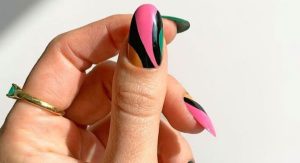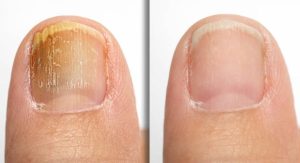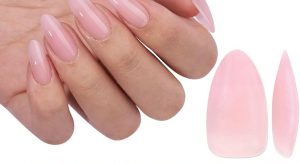Have you ever walked out of the salon with beautiful acrylic nails that Why Does My Nail Hurt After Getting Acrylics? only to feel sharp aches or persistent soreness afterward? Many assume a little discomfort is normal, but if your nail is throbbing, tender to touch, or downright painful, you might be dealing with more than just settling. In this guide, you’ll learn what really causes pain after acrylics and how to soothe, prevent, and avoid it in the future.
What Happens During Acrylic Application
Acrylic nails involve applying a liquid monomer and powdered polymer onto your natural nail plate. This mixture hardens into a solid extension. During the process, your technician may file, buff, dehydrate, and shape both your cuticle and nail bed to ensure strong adhesion. While these steps are standard, they can cause trauma if done too aggressively, leading to:

- Over-filing, which thins and weakens your nail plate. That leaves nerve endings exposed and vulnerable to pain.
- Improper cuticle prep or dehydration, which can lead to separation or lifting, causing pressure or sensitivity at the nail base.
Common Causes of Stripe or Nail Bed Pain
Shrinking & Tightening During Drying
Acrylic formulas can shrink slightly as they cure. That tension may translate into dull pressure or throbbing aches along the nail bed. First-timers often feel this most intensely.
Too-Thick or Long Acrylic Layers
Heavy, thick acrylics amplify mechanical strain on your natural nail. They can pull, press, and irritate the nail bed, especially if you opted for extreme lengths or pointy shapes.
Allergic Reactions to Products
Sensitive individuals may react to acrylic ingredients like ethyl methacrylate or harsh primers. This can lead to redness, swelling, or tender inflammation around the cuticles and nail bed.
Poor Technician Technique
An inexperienced nail tech may over-file, use acid primers, or press too hard during application, damaging the nail matrix or nerve endings beneath.
Preexisting Nail Weakness or Thinning
If your natural nails are thin or brittle (hapalonychia), the acrylic overlay can exacerbate sensitivity or cause pain under pressure.

Infection or Inflammation
Tiny abrasions from filing or cuticle pushing can introduce bacteria or fungus to the cuticle folds, leading to paronychia—painful swelling or pus-filled areas around the nail.
Real-Life Example Scenarios
- Sore first-timer: Nails hurt as they settle; mild throbbing fades within 24 hours.
- Allergic reaction: Finger shows redness, itching, and discomfort days after application. Removal and anti-inflammatory relief needed.
- Infection onset: Redness, swelling, and pus appear around the nail edge several days in. This could be paronychia requiring medical attention.
How to Relieve Acrylic Nail Pain
- Give it time – mild tightening or tenderness often subsides within 24 hours.
- Soak fingertips in warm water for 10–15 minutes to ease inflammation and soften the area.
- Use over-the-counter pain relief (ibuprofen, acetaminophen) for mild aches.
- Apply a cold compress on the sore area to reduce swelling.
- Gently massage with cuticle oil, particularly almond or jojoba oil, to hydrate and soothe.
- Remove acrylics carefully if pain worsens or persists—never pry them off, and seek a professional removal if needed.
How to Prevent Pain Before You Get Acrylics
- Choose an experienced, reputable nail technician with good hygiene practices.
- Ask for thin, even layers and avoid overly long or thick tips.
- Request non-acid primers to minimize nail plate damage.
- Speak up about allergies—consider patch testing first.
- Make sure cuticles are only gently pushed back, not cut or torn.
- Avoid harsh filing or buffing; let your tech know to file lightly.
- Stay hydrated, eat nail-supporting nutrients like biotin, zinc, and vitamin D.
Mistakes to Avoid That Often Cause Pain
- Assuming pain is normal indefinitely—persistent soreness could signal infection or damage.
- Ignoring cuticle or lifting issues. Moisture and minor gaps can quickly lead to irritation.
- Removing acrylics yourself by picking or peeling, which risks deeper nail trauma.
- Skipping breaks between sets—constant acrylic use thins natural nails and increases sensitivity.

Understanding the difference: Gel-X and soft gel nail extensions
Alternatives to Acrylics That May Be Gentler
- Press-on nails: Adhesive tips that avoid filing or primer and can feel less tense on your nail bed.
- Gel-X or soft gel systems: These require minimal etching and bond with less trauma to the nail plate.
FAQ: Reader-Focused Questions
Q: Is it normal for acrylic nails to hurt the first day?
A: Yes—mild discomfort as they settle is common, but intense pain or swelling is not.
Q: How long does acrylic nail pain typically last?
A: Usually up to 24 hours. If pain persists beyond two days, consider causes like lifting, thin natural nail, or irritation.
Q: Could I be allergic?
A: Yes. Redness, itching, or throbbing days after application may indicate a reaction to acrylic or primer. Consider switching brands or avoiding the treatment.
Q: When should I see a doctor?
A: Seek medical attention if there’s spreading redness, pus, fever, sharp or throbbing pain, or swelling that gets worse instead of better.
Q: Can filing too much cause lasting damage?
A: Yes—excessive filing can thin the nail plate and expose nerve endings, making nails sensitive long-term.
Q: What can I use to soothe my nails afterward?
A: Cuticle oil, gentle massaging, warm soaks, and pain relievers help. Moisturization and gloves during chores also support healing.
Final Thoughts & What You Can Do Next
Acrylic nails can be glamorous and confidence-boosting—but not at the cost of your nail health. Pain after getting acrylics often shows up due to over-filing, product reactions, overly thick or long tips, improper technique, or even infection. While mild soreness is expected, anything severe or persistent is worth addressing.
If you’re experiencing discomfort:
- Soak, soothe, and nourish your nails with hydration
- Avoid self-removal—seek professional help if needed
- Take breaks between services and build up nail strength
- Choose alternatives like soft gels or press-ons if acrylics repeatedly cause issues
Treat yourself kindly—your nails deserve care as much as style. With the right preparation, technique, and aftercare, pain-free acrylics are completely possible.

